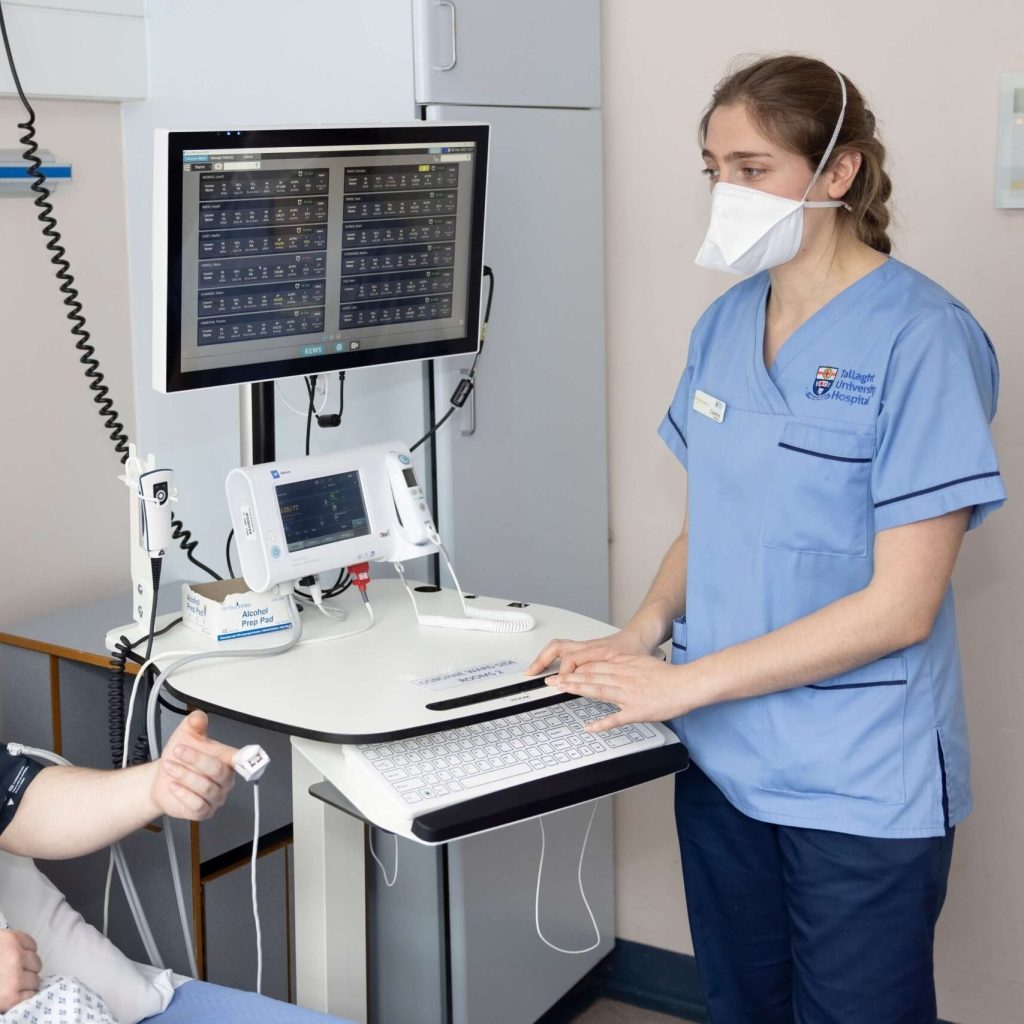
The advancement of the healthcare industry is continuously changing and revolutionizing for faster, more accurate, and more efficient patient care, all while dealing with administrative burdens, increasing data loads, and ongoing security concerns. With the surge of data in the medical IT world, there is an imminent need to access and record patient information efficiently.
One of the key emerging tools that meet these demands is the medical all-in-one (AIO) computer. These display-integrated computing solutions are more than just streamlined hardware—they are transforming the way healthcare facilities manage electronic health records (EHRs), harness AI-driven diagnostics, enable edge computing, and meet stringent compliance standards.
From nurses and physicians to IT teams and hospital administrators, medical AIOs are redefining what it means to deliver care in the digital age.
Tackling EHR Challenges with Purpose-Built Solutions
Implementing and optimizing electronic health record systems has long been a challenge. For nursing professionals, there is a growing administrative burden that takes their time away from patient care. Logging in and out of systems, manually inputting data, and navigating clunky software interfaces create friction and frustration for clinicians.
The medical all-in-one computers ease nurses’ burden by offering:
- Fast boot times and single sign-on (SSO) support
- Intuitive touchscreen interfaces designed for clinical use
- Seamless EHR integration with voice-to-text and stylus compatibility
- Compact, fanless designs that reduce noise and increase hygiene in clinical environments
By bringing computing directly to the point of care—on carts, in patient rooms, or at nursing stations—medical-grade all-in-ones streamline the documentation process, reduce lag in EHR access, and allow clinicians to spend more time with patients and less time behind a keyboard.
Accelerating AI-Driven Diagnostics and Imaging
AI is revolutionizing healthcare diagnostics, particularly in medical imaging. Deep learning models can now assist radiologists in analyzing complex data from MRIs, CT scans, and ultrasounds with incredible speed and accuracy. However, the power of these models depends heavily on the hardware running them.
Modern medical all-in-ones now include accelerated GPU performance and AI-enhanced chipsets that support deep learning algorithms natively. These systems can:
- Run inference models in real-time, flagging potential anomalies in scans
- Enable early detection of critical conditions like stroke or cancer
- Support decision-making tools that help prioritize urgent cases
By embedding AI capabilities directly into the computer, clinicians get faster, more reliable results—often at the bedside—without needing to send data to remote servers or wait for specialist reviews. This not only speeds up diagnosis but can be life-saving in time-critical scenarios.
Edge AI Inference: Real-Time Decisions at the Point of Care
Swift medical decisions can’t always wait for cloud processing. That’s where edge AI inference comes into play. Medical all-in-ones can process large datasets locally, directly on the device, without the latency associated with remote data centers.
This means:
- Real-time monitoring of patient vitals and automated alerts for abnormal readings
- Faster response in robot-assisted surgeries, where millisecond-level latency matters
- Streamlined integration with hospital IoT devices for smart workflows
Edge computing ensures that data stays within the hospital’s secure network while enabling real-time analytics that empower caregivers to act faster and more confidently.
Built to Last: Long-Life Availability and Industrial-Grade Reliability
Unlike consumer-grade computers, medical all-in-ones are engineered with long lifecycle support, which ensures that they remain compatible with hospital infrastructure and software platforms for years. This extended availability is essential in environments where continuity and consistency are critical.
Key features include:
- Industrial-grade components that withstand 24/7 use in demanding conditions
- Fanless cooling designs to prevent breaking parts and reduce infection risk from circulated airborne particulates
- Hot-swappable batteries and backup power options for ongoing uninterrupted operation
For healthcare teams, this means fewer disruptions, less frequent device replacements, and a better return on investment. It also ensures compliance with medical certifications and HIPAA compliance.
Secure and Compliant by Design
Patient data is among the most sensitive information in any industry. With increasing threats from ransomware, data breaches, and internal misuse, medical facilities must take security seriously. Medical all-in-ones are built to comply with healthcare data protection standards, including HIPAA.
Security features often include:
- Secure boot to ensure only trusted software loads at startup
- Full-disk encryption to protect patient records even if the device is stolen
- Role-based access control and biometric login support
- Network segmentation and secure firmware updates
Combined, these tools offer a multilayered security approach that protects patient data while allowing healthcare teams to access critical information quickly and safely.
Supporting Better Care, Every Step of the Way
Whether it’s helping nurses reduce time spent on administrative tasks or providing AI-accelerated imaging results to radiologists, medical all-in-one computers are making a measurable impact across the healthcare spectrum.
Some of the benefits seen in hospitals and clinics include:
- Higher patient throughput thanks to faster documentation and access to records
- Improved clinician satisfaction by reducing tech-related frustrations
- Fewer medical errors through real-time alerts and decision support
- Lower IT maintenance costs with long-lasting, durable hardware
As healthcare continues to embrace digital transformation, investing in high-performance, secure, and AI-ready hardware is no longer optional—it’s essential. Medical all-in-ones offer a forward-thinking solution that meets the multifaceted needs of modern healthcare while supporting the ultimate goal: better outcomes for patients.

